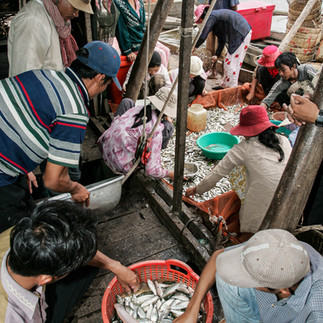How to do pictures in the street.
- Ian Miller
- May 31, 2023
- 4 min read
Hi there, fellow street photographers! Are you looking for some tips and tricks on how to capture the essence of urban life? Do you want to learn how to take stunning photos of people, places, and moments in the city? If so, you've come to the right place!
In this blog post, I'm going to share with you some of my secrets on how to do classic street photography. You know, the kind of photography that shows the reality and beauty of everyday life, without staging or posing anything. The kind of photography that was pioneered by legends like Henri Cartier-Bresson, Robert Frank, and Vivian Maier.
Street photography is one of my favourite genres of photography because it challenges me to be creative, observant, and spontaneous. It also allows me to connect with people and cultures in a deeper way. Street photography is not easy, but it's definitely rewarding and fun!
So, without further ado, here are some of my best tips on how to do classic street photography:
1. Use a small and discreet camera. One of the keys to successful street photography is to blend in with your surroundings and not draw attention to yourself. A big and bulky camera will make you stand out and scare away potential subjects. A small and discreet camera, on the other hand, will make you look like a tourist or a casual snapshooter, which will help you get closer and capture more candid shots.

2. Choose a simple and versatile lens. Another important factor in street photography is your choice of lens. You don't want to carry around a bunch of lenses and waste time changing them. You want to have one lens that can handle most situations and give you a consistent look. I recommend using a prime lens with a focal length between 28mm and 50mm, which will give you a natural perspective and a wide enough angle to capture the context of the scene.
3. Set your camera to aperture priority mode. When it comes to street photography, speed is everything. You don't want to miss a shot because you were fiddling with your settings. That's why I suggest setting your camera to aperture priority mode, which will let you control the depth of field and let the camera choose the shutter speed for you. This way, you can focus on composing your shot and reacting to the moment.
4. Use a high ISO and a fast shutter speed. Street photography often involves moving subjects and low-light situations, so you need to use a high ISO and a fast shutter speed to freeze the action and avoid blur. Don't worry too much about noise or grain, as they can add some character and mood to your photos. Aim for a shutter speed of at least 1/250th of a second or faster, depending on the light and movement.
5. Look for interesting light, shadows, shapes, colours, and patterns. One of the things that makes street photography so fascinating is the variety of elements that you can find in any given scene. You can use light, shadows, shapes, colours, and patterns to create contrast, drama, harmony, or abstraction in your photos. Look for these elements and use them to enhance your composition and story.
6. Find a good spot and wait for something to happen. Sometimes, street photography is about patience and anticipation. You may find a spot that has great potential for a photo, but nothing interesting is happening there yet. In that case, you can wait for something or someone to enter the frame and complete your vision. This technique is called "fishing" and it can yield some amazing results.

7. Be respectful and friendly with your subjects. Street photography is not about sneaking around and stealing photos of people without their consent. It's about capturing human emotions and interactions in an honest and respectful way. If you want to photograph someone, try to make eye contact and smile first. If they seem uncomfortable or annoyed, move on. If they seem curious or friendly, ask for permission or start a conversation.
8. Don't be afraid to get close. One of the most common mistakes that beginners make in street photography is shooting from too far away. This results in photos that lack impact and intimacy. To avoid this, you need to overcome your fear of getting close to your subjects and fill your frame with them. This will make your photos more engaging and powerful.

9. Shoot from different angles and perspectives. Street photography is not about taking boring snapshots from eye level. It's about being creative and experimenting with different angles and perspectives. Try shooting from high or low angles, from behind or from the side, from close up or from far away. You never know what interesting shots you may discover by changing your point of view.
10. Have fun and enjoy the process! Last but not least, remember that street photography is supposed to be fun! Don't take it too seriously or stress yourself out over getting the perfect shot every time. Enjoy the process of exploring new places, meeting new people, and capturing unique moments.



























Kommentarer